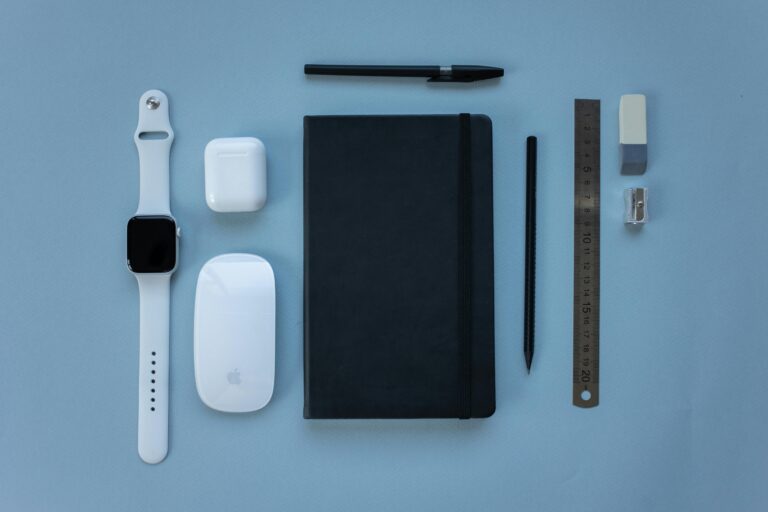Cruise Ship Stabilizers: How Do They Work!
Many new cruises ask about cruise ship stabilizers, what are stabilizers, and how they work.
Well, cruise stabilizers minimize rolling and keep the cruise upright. While sailing, you won’t feel synchronous rolling even in bad weather conditions, and this is because the stabilizers are balancing the center of gravity.
If there is no stabilizer, the bottle of champagne and glasses start spilling drink everywhere, making your cruise voyage worse.
In this article, I will share what cruise ship stabilizers are, how they work and their types. So let’s get started.
What Are Cruise Ship Stabilizers?
Everyone knows of airplane wings, and cruise ship stabilizers are like them. Two stabilizers are on both sides of the ship, below the waterline.
Both stabilizers of the cruise ship extend outward and downward from the hall. The main purpose of these stabilizers is to keep the cruise upright during extreme weather conditions, minimize rolling, and prevent them from sinking.
The cars have shocks to absorb jerks and make the journey comfortable, and the ships have stabilizers to avoid rolling and make the voyage comfortable.
As compared to old-age ocean liners like the Titanic, stabilizers are a big upgrade in the modern cruise industry.
How Does Cruise Ship Stabilizer Work?

This section is going to be a bit technical. Before understanding how cruise stabilizers work, you must understand what happens if no stabilizers exist.
To begin with, if a cruise ship doesn’t have stabilizers, it will remain upright in the sea, and short waves don’t impact the stability of a cruise.
The center of gravity and buoyancy determines the stability of the cruise. If both these forces align, the ship becomes stable and floats on the sea without rolling.
For your understanding, the center of gravity applies force in a downward direction, whereas the buoyancy opposes the weight of the cruise.
But the wavelength increases under extreme conditions or Swells, disturbing the alignment of the center of gravity and buoyancy. This will increase the chances of cruise ships tipping over.
You can see in the image below that when buoyancy increases on one side, the cruise will lean to the other.

For handling such extreme conditions, the cruises use stabilizers to counter the tipping force and minimize rolling.
Ship stabilizers are like airplane wings that extend outwards and in downward directions. And several kinds of stabilizers curse ship uses.
Types Of Cruise Ship Stabilizer
Mainly cruise stabilizers have two types;
- Active Stabilizers
- Passive Stabilizers
Passive Stabilizers
First, let’s talk about passive stabilizers. Usually, Passive stabilizers are fixed; the most common include Bilge keels. The bilge keels are like fish wings, and they might be one of two on one side of a ship hull.
The passive stabilizers increase the hydrodynamic resistance while rolling dampens rolls and keeps the ship upright.
Most small cruise ships use passive stabilizers to balance the cruise and minimize rolling; they are cheap but less effective.
Active Stabilizers
Most of the famous cruise ships use active stabilizers to counter the force. This type of stabilizer uses advanced technology like gyroscopes, sensors or water tanks to detect the right angle and counter the force by adjusting the wings.
Active stabilizers include fins that change the angle to produce buoyancy force to stabilize the cruise.
Active stabilizers are more effusive than passive stabilizers; that’s why most luxurious cruises use Active stabilizers to ensure smooth voyages.
Does Cruise Use Gyroscopic Stabilizers
The Gyroscopic stabilizers are the type of active cruise ship stabilizer. Mostly, such stabilizers use big wheels or discs to balance the ship’s movement.
When the ship rolls to one side, the gyroscope spins in the opposite direction, generating a torque that helps stabilize the vessel.
But most large cruise ships don’t use gyroscopic stabilizers because cruises are heavier. That’s why a gyroscope for such ships must be large enough to control the rolling. The large gyroscopes are more expensive than active fins.
Also, the gyroscopes don’t efficiently work for large cruise ships, whereas the active fins effectively balance the rolling and provide a smooth voyage.
How Many Stabilizers Do Cruise Ships Have?

The number of stabilizers varies from cruise to cruise. The larger cruise needs stabilizers on each side to maintain the center of gravity and avoid rolling.
Most modern cruise lines, like Royal Caribbean, Carnival, Celebrity, and Disney, use two stabilizers on each side of the cruise ship. But few big ships like Cunard Line’s Queen, Royal Caribbean Freedom and Oasis use four stabilizers, two on each side.
As larger ships are heavier, the two stabilizers are not enough to counter the forces and reduce the ship’s rolling motion.
What Will Happen If Stabilizer Fails?
Most of the cruisers ask what will happen if cruise ship stabilizers fail. This is a very exceptional case; the stabilizers won’t fail during voyages.
If stabilization fails, the passengers will experience a lot of rolling and pitching motion, making them uncomfortable. Enjoying champagne onboard will become tough, and the onboard activities will become more challenging.
With the increase in rolling motion, seasickness also becomes more prevalent, ruining all your entertainment and making your journey worse.
However, large and heavy cruise ships have a huge center of gravity and buoyancy force that requires more force to roll. That’s why, in most cases, large cruise ships don’t roll even if their stabilizers fail.
Secondly, modern cruise ships are designed to remain upright without stabilizers, so you don’t need to worry about rolling on a cruise ship.
Impact Of Stabilizers On Speed & Fuel Efficiency?
Undoubtedly, the stabilizers affect the speed of cruise ships. The old traditional stabilizers like gyroscopes add tons of weight that reduce the speed.
But the modern stabilization system, like active fins stabilization, uses sensors to detect waves so they don’t weigh too much. Also, these are retractable stabilizers that only come out when a surge or swell occurs.
The flat stabilizer fin creates more resistance against water that can reduce the speed up to 10 per cent, whereas fuel consumption also increases due to greater force.
Conversely, if a cruise ship uses curved fins, they don’t impact the speed and fuel consumption. These fins create more lift and easily counter the forces. That’s why curved active fins are even more effective during high speed.
Quantum Anti-Rolling Stabilization Technology
Most luxury cruises, yachts and vessels use Quantum anti-rolling stabilization. According to a report by quantum stabilizers,
Around 85% of the super yachts use quantum stabilizers
In 2000, Quantum invented the first zero-speed stabilization technology. This technology generates more lift force to minimize the rolling effect.
Later, the Quantum Maglift Rotor Stabilizer revolutionized the cruise industry. These stabilizers work on the “Magnum Effect” principle, where the rotating cylinder generates lift from its expected trajectory. In this way, these stabilizers provided more comfort at low speeds.
The successor of Maglift Rotor was Dana-Foil, which offers retractable fins. These stabilizers use less power and drag but produce more lift. And till now, Dyna-foil stabilizers are a more efficient Quantum Stabilization system.
Final Words
Cruise ships stay upright and provide maximum comfort, all possible due to stabilizers. On either side of the ship, fin stabilizers minimize the rolling motion and provide a comfortable voyage.
Most modern cruises use active curved fins that reduce the ship’s roll without impacting the speed and fuel consumption.
FAQs About Cruise Ship Stabilizers
How much does it cost to install stabilizers on a cruise ship?
The cost of installing a stabilizer on a cruise ship varies and depends on the type of stabilization system, cruise weight, design and other requirements. According to reports, the stabilizer system costs $65,000 for 50 to 60-foot vessels and $130,000 for 120 to 130-foot vessels.
Do cruise ships turn off stabilizers?
Cruise ships often turn off stabilizers when the sea waves are normal. Most stabilization systems produce more drag against water, impacting fuel consumption and speed.
Which type of stabilizer is the most popular and fitted to most ships?
Most of the modern cruise lines use active fin stabilizers. They are retractable, and the cruise captain turns them off when the sea is calm. This stabilizer saves fuel and is more efficient than gyroscopes or passive stabilizers.
Can the ship safely sail without stabilizers?
Yes, cruise ships can sail safely without stabilizers, but when it comes to comfort level, you won’t experience it as there is so much rolling motion without stabilizers.
I am Zoe Grace, a passionate enthusiast of cruise ships. With a decade of firsthand experience in the cruising industry, I have developed a deep understanding of the intricacies and wonders that these majestic vessels hold.
Now, I am excited to embark on a new journey as an author, sharing my knowledge and insights with readers who share my fascination for the world of cruising.
Join me as we explore the captivating world of cruise ships together.





